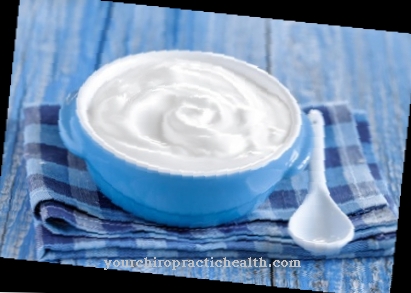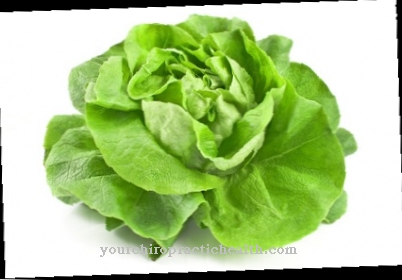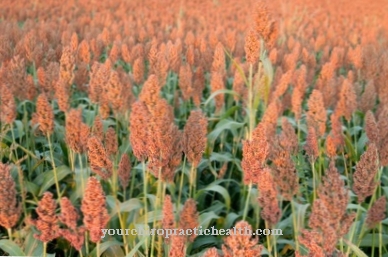Chickpeas are popular in many oriental dishes, but thanks to their versatility they are also very popular in Germany. The most common of the legumes is the yellow-beige variety. In terms of size and shape, the chickpea is reminiscent of a hazelnut.
What you should know about the chickpea

The chickpea belongs to the legume family and probably comes from Anatolia, the Asian region of Turkey. It has long served as an important source of food in various parts of the world.
In India and Mexico, for example, the chickpea is still a staple food that is served more than once a week on average. In these countries it is prepared in very different ways. In this country, the use of chickpeas has been documented since the 16th century. In Germany, however, it is rarely grown because it prefers a warm climate. India is the largest producer. The chickpea is sold worldwide and is also enjoying increasing attention in Germany. It is not directly related to the pea, which is native to Central Europe, even if the name suggests it.
The annual herbaceous plant can grow up to a meter high, whereby the actual height depends on the climatic conditions. The prefix giggle comes from the Latin word Cicer, which means "pea". A good mood is not set by consuming it. Dried and canned, the chickpea is available all year round. It has a very mild and slightly nutty flavor.
Importance to health
Vegans and vegetarians in particular benefit from eating chickpeas, because the legume provides a lot of protein and iron. Especially for vegans, the calcium content is worth mentioning, which at 125 mg corresponds to that of milk. Chickpeas are high in calories, but thanks to their high fiber content, they fill you up quickly and for a long time.
Therefore, they are also suitable for figure-conscious people. The extremely swellable dietary fiber also helps to lower the cholesterol level. In the intestine, they bind to the fats.
As a result, they do not get into the blood, but are simply excreted in the stool. In the meantime, the intestinal peristalsis is stimulated, the intestine is cleaned and a healthy intestinal environment is maintained. The fiber is an exceptionally good way of keeping the intestinal lining healthy, which can significantly reduce the risk of colon problems, including colon cancer. The antioxidants it contains also have a cancer-preventing effect.
Due to its high fiber and protein content, the chickpea also regulates blood sugar levels, which is of particular interest to diabetics. The legumes also protect the heart and circulation. If you want to improve blood lipid levels and thus heart and vascular health, you should consume chickpeas regularly. They counteract arteriosclerotic changes and thus lower the risk of coronary heart disease.
Ingredients & nutritional values
| Nutritional information | Amount per 100 gram |
| Calories 364 | Fat content 6 g |
| cholesterol 0 mg | sodium 24 mg |
| potassium 875 mg | carbohydrates 61 g |
| Fiber 17 g | protein 19 g |
First and foremost, the chickpea contains a lot of protein and carbohydrates. The proteins take up 20 percent of the ingredients of the legume and the carbohydrates are even around 50 percent. The chickpea also contains valuable fiber, folic acid and vitamins B1 and B6. The minerals include a lot of magnesium, zinc and iron, for example. Amino acids are also abundantly represented in chickpeas.
Intolerances & allergies
The uncooked chickpea, just like the other legumes, contains the poison phasin, which is indigestible. Minor cases of poisoning lead to nausea, vomiting and diarrhea, including bleeding in the gastrointestinal area.
Phasin is chemically changed by boiling and thus rendered harmless. The dry chickpeas must therefore be soaked for about twelve hours and the water changed several times. Cooking time is about two hours. However, clean water and not the soaking water should be used for this.
However, if properly prepared, the chickpea is very nutritious. Anyone who notices they get a rash every time they eat it is likely to be allergic to the chickpea. Skin reactions or difficulty breathing are among the most common symptoms of an allergy that occurs after eating the chickpea.
The triple sugar contained in the chickpea can lead to gas formation in the intestine. Therefore, sensitive people often react with flatulence after consumption.
Shopping & kitchen tips
Since the chickpea has to soak and cook for a long time, it is not suitable for spontaneous cooking. The situation is different if pre-cooked canned legumes are used, because they are only roasted, heated and, depending on the recipe, used again.
The best place to keep the chickpeas in this form is also a dark and cool place. The liquid that surrounds the peas is not suitable for consumption due to the toxin phasin and the bitter substance saponin and should therefore be thrown away before further preparation. Chickpeas are available in all supermarkets, in organic and natural food stores, Asia shops and health food stores. Canned chickpeas and legumes last almost indefinitely in sealed packaging and when stored in a cool, dry place.
Optimally, the chickpeas should be ventilated occasionally. Once the packaging has been opened, the best before date of the chickpeas should be observed. Incidentally, the flowers of the chickpea are also suitable for consumption. However, this part of the plant is not available in Germany. Many delicious dishes are possible with the chickpea itself.
Preparation tips
The chickpea has many uses in the kitchen. The legume likes to combine with strong flavors, which also makes it more digestible. This positive effect is particularly valued in the Orient, the Mediterranean region and in India. The chickpea can be found in many different dishes, for example in humus, falafel, tahini, panelle, panizza (baked dough) and panisse. Chickpeas are a very important ingredient in numerous international dishes.
For example, they are very popular in Spanish, Italian and North African stews. They are also a very popular ingredient in Indian curries. For the Indian pakora, the chickpea is also used as flour in the batter. The chickpea flour can also be used to bake wonderfully sweet things, for example delicious cake bases with a delicious nut flavor or a chocolate cake. In the hearty cuisine, chickpeas are made with strong spices and herbs, for example paprika, [[cumin], coriander, garlic and lovage.
The crunchy chickpea seedlings are also a classic. For this, the sprouts are briefly blanched and eaten like vegetables. Alternatively, it can be used to refine a salad. Cooked chickpeas are also great for making a porridge that can be flavored as needed. Ultimately, there are hardly any limits to your own creativity when it comes to using the chickpeas. Anything that tastes good is allowed. Therefore, you can experiment with the legume.













.jpg)

.jpg)
.jpg)











.jpg)